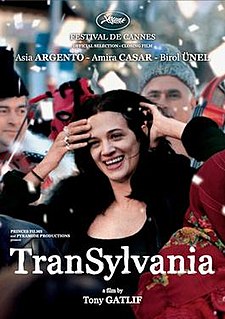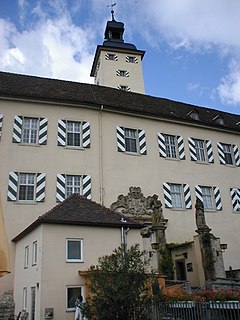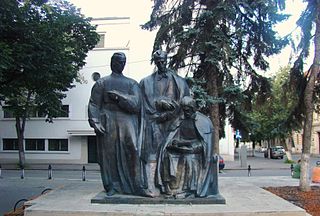 W
WEndre Ady was a turn-of-the-century Hungarian poet and journalist. Regarded by many as the greatest Hungarian poet of the 20th century, he was noted for his steadfast belief in social progress and development and for his poetry's exploration of fundamental questions of the modern European experience: love, temporality, faith, individuality, and patriotism.
 W
WThe Carpathian Castle is a novel by Jules Verne first published in 1892. It is possible that Bram Stoker took inspiration from this for his 1897 novel Dracula. Due to castle aspect and local toponymy, it is assumed that Colț Castle (ro) in Hunedoara county inspired Jules Verne.
 W
WDoina, or Doină, is a political poem by the Romanian Mihai Eminescu. It was first published in 1883 and is therefore seen by some as Eminescu's final work in verse, although it may actually be an 1870s piece, inspired or enhanced by the perceived injustice of the Berlin Treaty. A variation of the doina, picked up from Romanian folklore, it is noticeably angry to the point of rhetorical violence, a radical expression of Romanian nationalism against invading "foreigners", noted for its hints of ecopoetry and "anti-technicist" discourse. Doina delineates the ideal geographical space of Greater Romania, at a time when Romanian-inhabited regions were divided between an independent kingdom and multinational empires. Its final lines call on Stephen the Great, depicted as a sleeping hero, to take up the cause of Romanians and chase foreigners out with the sound of his horn. The same basic themes appear in another poem by Eminescu, the anthem-like La arme, which is sometimes discussed as a variant of Doina.
 W
WThe flag and coat of arms of Transylvania were granted by Maria Theresa in 1765, when she established a Grand Principality within the Habsburg Monarchy. While neither symbol has official status in present-day Romania, the coat of arms is marshalled within the national Romanian arms; it was also for decades a component of the Hungarian arms. In its upper half, it prominently includes the eagle, which may have been one of the oldest regional symbols, or is otherwise a localized version of the Polish eagle. Early versions of the Transylvanian charges were first designed in Habsburg Hungary at some point before 1550, and were therefore symbols of pretence.
 W
WTraian Herseni was a Romanian social scientist, journalist, and political figure. First noted as a favorite disciple of Dimitrie Gusti, he helped establish the Romanian school of rural sociology in the 1920s and early '30s, and took part in interdisciplinary study groups and field trips. A prolific essayist and researcher, he studied isolated human groups across the country, trying to define relations between sociology, ethnography, and cultural anthropology, with an underlying interest in sociological epistemology. He was particularly interested in the peasant cultures and pastoral society of the Făgăraș Mountains. Competing with Anton Golopenția for the role of Gusti's leading disciple, Herseni emerged as the winner in 1937; from 1932, he also held a teaching position at the University of Bucharest.
 W
WThe Jewish Party, in full Jewish Party of Romania or Jewish National Party, was a right-wing political party in Romania, representing Jewish community interests. It originally followed an undercurrent of Zionism, promoting communitarianism as a prerequisite of resettlement in Palestine, and later progressed toward Religious Zionism and Revisionism. Founded by Tivadar Fischer, József Fischer, and Adolphe Stern, it had particularly strong sections in Transylvania and Bessarabia. In the Old Kingdom, where it registered least support, it was mainly represented by A. L. Zissu and Renașterea Noastră newspaper.
 W
WMitică is a fictional character who appears in several sketch stories by Romanian writer Ion Luca Caragiale. The character's name is a common hypocoristic form of Dumitru or Dimitrie. He is one of the best-known figures in Caragiale's 1901 collection Momente şi schiţe, as well as in Romanian humor at large. Mitică is a male resident of Bucharest whose background and status are not always clear, generally seen as an allegory of the average Bucharester or through extension, inhabitants of Romania's southern regions—Wallachia and Muntenia. According to accounts, he was based on a resident of Sinaia, whom Caragiale had befriended.
 W
WThe National Museum of Transylvanian History is a history and archaeology museum in the city of Cluj-Napoca, Romania. It features a permanent exhibition, as well as temporary exhibitions, the "Tezaur" exhibition, and Pharmacy Historical collection—this last opened in the Hintz House, an historical building in the city's center.
 W
WRomânul, was a political and literary newspaper published in Bucharest, Romania, from 1857 to 1905. Established as the leading voice of Romanian liberalism in the state of Wallachia, it had direct connections to the radical ideology of Western Europe. Its founder and director was the aristocrat C. A. Rosetti, known as Romantic poet, Masonic promoter and left-wing activist, seconded by the brothers Ion C. Brătianu and Dimitrie Brătianu. Românul's roots were planted in the 1848 revolutionary movement, whose press organ, Pruncul Român, was a direct predecessor.
 W
WOctavian or Octav Smigelschi was an Austro-Hungarian painter and printmaker, one of the leading culturally Romanian artists in his native Transylvania. Of mixed Polish, Aromanian, and possibly Ruthenian, background, he identified mainly with the Romanian-speaking Greek-Catholics, although some of his most important work was also done for the rival Romanian Orthodox Church. Smigelschi studied under Bertalan Székely at the Drawing School and Art Teachers' College in Budapest, becoming familiar with the historicist trend in contemporary Hungarian art. While working on and off at high schools in Upper Hungary and Transylvania, he experimented with borrowings from ancient Romanian handicrafts. Smigelschi's European journeys with Arthur Coulin took him to Cervara di Roma, where he studied Renaissance art, while moving away from academic art and into Symbolism and Art Nouveau.
 W
WVasile Vasilievici Stroescu, also known as Vasile de Stroesco, Basile Stroesco, or Vasile Stroiescu, was a Bessarabian and Romanian politician, landowner, and philanthropist. One of the proponents and sponsors of Romanian nationalism in Russia's Bessarabia Governorate, as well as among the Romanian communities of Austria-Hungary, he was also a champion of self-help and of cooperative farming. He inherited or purchased large estates, progressively dividing them among local peasants, while setting up local schools and churches for their use. An erudite and traveler, he abandoned his career in law to focus on his agricultural projects and cultural activism. For the latter work, he became an honorary member of the Romanian Academy.
 W
WThe Symbolist movement in Romania, active during the late 19th and early 20th centuries, marked the development of Romanian culture in both literature and visual arts. Bringing the assimilation of France's Symbolism, Decadence and Parnassianism, it promoted a distinctly urban culture, characterized by cosmopolitanism, Francophilia and endorsement of Westernization, and was generally opposed to either rural themes or patriotic displays in art. Like its Western European counterparts, the movement stood for idealism, sentimentalism or exoticism, alongside a noted interest in spirituality and esotericism, covering on its own the ground between local Romanticism and the emerging modernism of the fin de siècle. Despite such unifying traits, Romanian Symbolism was an eclectic, factionalized and often self-contradictory current.
 W
WTransylvania is a 2006 French drama film starring Asia Argento. In 2006, Director Tony Gatlif and composer Delphine Mantoulet won the Georges Delerue Prize at the Flanders International Film Festival for the score, and Gatlif was nominated for the Grand Prix award. Transylvania premiered at the 2006 Cannes Film Festival in France on 28 May, and premiered in the United States on 16 March 2007 at the Cleveland International Film Festival and in the United Kingdom at the Cambridge Film Festival on 6 July 2007.
 W
WThe Transylvanian Association for Romanian Literature and the Culture of the Romanian People is a cultural association founded in 1861 in Sibiu (Hermannstadt). It had an important role in the cultural life and the movement of national awakening for the Romanians in Transylvania.
 W
WThe Transylvanian Museum is a museum situated in Gundelsheim, Germany, dedicated to the protection, preservation and documentation of the cultural heritage of the Transylvanian Saxons and of their coexistence with the other Transylvanian ethnic groups in this multi-ethnic region.
 W
WThe Transylvanian School was a cultural movement which was founded after part of the Romanian Orthodox Church in Habsburg-ruled Transylvania accepted the leadership of the pope and became the Greek-Catholic Church. The links with Rome brought to the Romanian Transylvanians the ideas of the Age of Enlightenment. The Transylvanian School's major centres were in the cities of Balázsfalva, Nagyvárad, Lugos and Belényes.